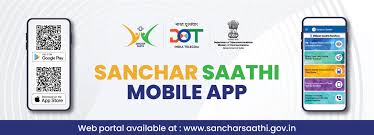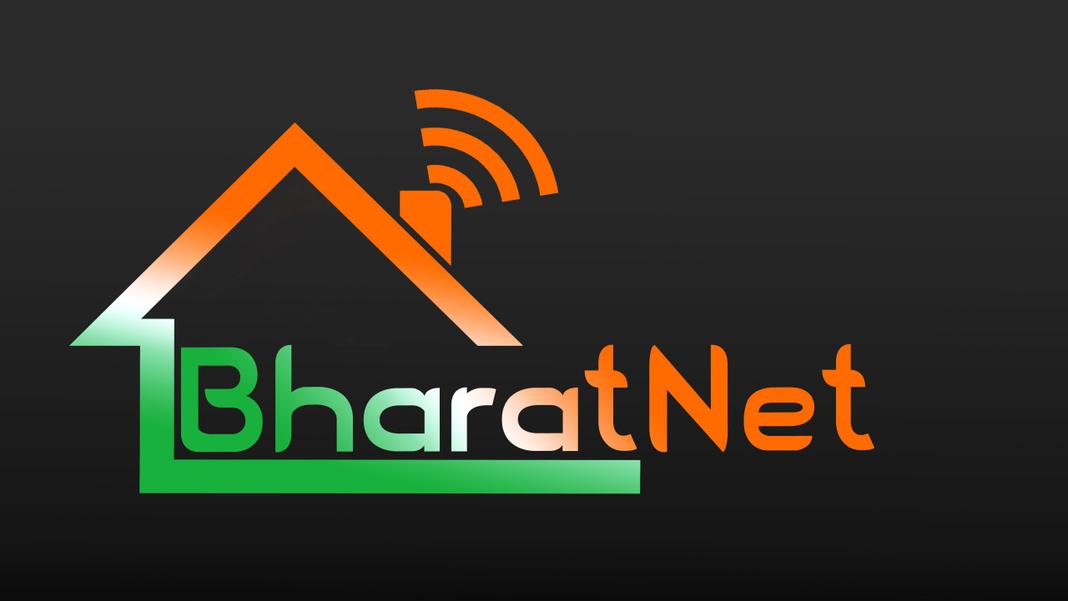Sanchar Saathi App

- 19 Jan 2025
In News:
In a landmark move to enhance telecom accessibility, security, and empowerment across India, the Union Minister of Communications launched a suite of citizen-focused initiatives. Key highlights of the event included the launch of the Sanchar Saathi Mobile App, National Broadband Mission (NBM) 2.0 and the inauguration of the Intra Circle Roaming facility at DBN Funded 4G Mobile Sites.
Sanchar Saathi Mobile App
- Launched by: Department of Telecommunications (DoT), Ministry of Communications.
- Platforms: Available on Android and iOS.
- Objective: Strengthen telecom security, empower citizens, and combat telecom fraud.
- Key Features:
- Chakshu (SFC): Report suspected fraud communications (calls/SMS).
- Know Your Mobile Connections: Identify and manage all mobile numbers issued in one’s name.
- Block Lost/Stolen Devices: Swiftly block, trace, and recover lost/stolen mobile phones.
- Verify Handset Genuineness: Confirm the authenticity of mobile handsets before purchase.
Impact so far (via Sanchar Saathi Portal, launched May 2023):
- 2.75 crore fraudulent connections disconnected.
- 25+ lakh lost/stolen devices blocked.
- 12.38 lakh WhatsApp accounts linked to cybercrimes disengaged.
- 11.6 lakh mule bank accounts frozen.
- 90% spoofed international calls blocked within 2 months of new prevention system.
National Broadband Mission (NBM) 2.0
- Launched by: Union Minister of Communications, builds upon NBM 1.0 (2019–2024).
- Part of: National Digital Communications Policy, 2018.
- Aim: Digitally empower citizens and bridge the digital divide to realize the vision of Viksit Bharat by 2047.
Key Targets (by 2030):
- 2.70 lakh villages to be connected with OFC (from ~50,000 now).
- 90% broadband connectivity to anchor institutions (schools, PHCs, Panchayats, Anganwadis).
- Fixed broadband speed: Increase national average from 63.55 Mbps (2024) to 100 Mbps.
- Right of Way (RoW) disposal time: Reduce from 60 days to 30 days.
- Rural internet subscribers: Increase from 45 to 60 per 100 population.
- 30% of mobile towers to be powered by sustainable energy.
- 100% mapping of PSU fiber networks on PM GatiShakti National Master Plan by 2026.
- Enhanced use of “Call Before u Dig (CBuD)” app to protect underground telecom infrastructure.
- Facilitate 5G rollout, and prepare infrastructure for 6G and common telecom ducts in all linear projects.
- Leverage power sector (e.g. Optical Ground Wire - OPGW) for broadband in remote/hilly areas.
Intra Circle Roaming (ICR) at DBN-Funded 4G Sites
- Launched by: Ministry of Communications.
- Implemented under: Digital Bharat Nidhi (DBN), formerly USOF.
- Objective: Allow subscribers of multiple telecom service providers (TSPs) (e.g., BSNL, Airtel, Reliance) to access 4G services from a single DBN-funded tower.
- Impact:
- Eliminates need for duplicate towers.
- Covers 27,000+ towers across 35,400 remote villages.
- Enhances user choice, reduces cost, and ensures efficient infrastructure use.
BSNL floats Rs 65,000 crore tender for phase-III BharatNet project

- 20 Feb 2024
Why is it in the News?
BSNL, the state-owned telecommunications company, has initiated a tender process amounting to approximately Rs 65,000 crore for the implementation of the phase-III BharatNet project.
What is the BharatNet Phase III Project?
- The BharatNet phase-III project adopts a three-level architecture:
- Internet leased line bandwidth
- Middle-mile connectivity, and
- Last-mile connectivity
- It aims to involve village-level entrepreneurs or Udyamis in providing last-mile connectivity to households on a revenue-sharing basis.
- BSNL aims to provide 15 million home fibre connections over five years using the BharatNet Udyami model.
About BharatNet Project:
- The BharatNet Project is one of the largest rural telecom projects in the world.
- It aimed at providing broadband connectivity to all Gram Panchayats across India in a phased manner.
- Its core objective is to ensure equitable access to broadband services for all telecom service providers, fostering the deployment of services like e-health, e-education, and e-governance in rural and remote areas.
- Initiated in 2011 and executed by Bharat Broadband Network Limited (BBNL), a Special Purpose Vehicle established in 2012, the project operates in three phases.
- Phase I launched in 2011, focused on creating the National Optical Fibre Network, leveraging existing infrastructure and laying additional fibre to bridge connectivity gaps up to the Gram Panchayat level.
- Phase II, approved in 2017, builds upon Phase I’s experiences, aligning with the Digital India vision.
- It adopts a flexible approach, integrating various media such as Optical Fibre Cable (OFC), Radio, and satellite to connect Gram Panchayats, utilizing models like State-led, Private Sector, and CPSU Models for implementation.
- Phase III, spanning from 2019 to 2023, aims to establish a robust, future-ready network with district-to-block fibre connectivity, featuring ring topology for redundancy.
- This comprehensive approach ensures the creation of a resilient and inclusive telecom infrastructure, facilitating socio-economic development in rural India.
